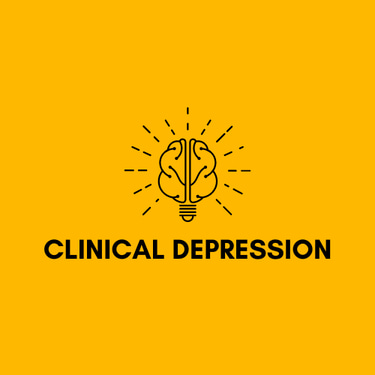For Questions: Text (833)233-0869
Telehealth Depression Management: A New Frontier in Mental Health Care


In today’s fast-paced world, where stressors are abundant and mental health challenges are on the rise, finding effective ways to manage anxiety and depression has become crucial. One innovative solution that has emerged in recent years is telehealth. This approach, often referred to as Telehealth Depression Management, has revolutionized the way individuals receive mental health care, providing accessibility, flexibility, and personalized treatment options. In this comprehensive article, we will explore the role of telehealth in managing depression, the benefits it offers, and how it is shaping the future of mental health care.
Understanding Depression and Its Impact
Before diving into the specifics of Telehealth Depression Management, it is essential to understand what depression is and its profound impact on individuals' lives. Depression is more than just feeling sad or down; it is a serious mental health condition that affects how a person feels, thinks, and handles daily activities. According to the World Health Organization (WHO), depression is the leading cause of disability worldwide, affecting over 264 million people.
Symptoms of depression can vary widely and may include:
Persistent sadness or hopelessness
Loss of interest in activities once enjoyed
Fatigue and decreased energy
Difficulty concentrating or making decisions
Changes in sleep patterns (insomnia or oversleeping)
Appetite changes (overeating or loss of appetite)
Thoughts of death or suicide
Depression can significantly impair an individual’s ability to function at work, school, and in social situations. Despite its prevalence, many individuals with depression do not seek treatment due to stigma, lack of access to mental health care, or other barriers. This is where telehealth comes into play.
What is Telehealth?
Telehealth, also known as telemedicine, refers to the use of digital information and communication technologies, such as computers and mobile devices, to access health care services remotely. It allows patients to consult with healthcare providers, including mental health professionals, without the need for an in-person visit. Telehealth encompasses a wide range of services, including video conferencing, phone consultations, and even text-based therapy.
The rise of telehealth has been driven by several factors, including advancements in technology, the need for accessible health care, and the global COVID-19 pandemic, which forced many healthcare systems to adopt remote care models. Telehealth Depression Management specifically refers to the use of telehealth services to diagnose, treat, and manage depression.
The Benefits of Telehealth Depression Management
Telehealth Depression Management offers numerous benefits, making it an attractive option for those seeking mental health care. Below are some of the key advantages:
Accessibility: One of the most significant barriers to mental health care is access. Many individuals live in rural or underserved areas where mental health services are limited. Telehealth breaks down these barriers by allowing patients to connect with mental health professionals from the comfort of their homes, regardless of location.
Convenience: Telehealth allows patients to schedule appointments at times that work best for them, without the need to take time off work or travel long distances. This convenience is particularly beneficial for those with busy schedules or mobility issues.
Reduced Stigma: Unfortunately, there is still a stigma associated with seeking mental health care. Telehealth provides a level of anonymity that can make it easier for individuals to seek help without fear of judgment or discrimination.
Continuity of Care: Telehealth ensures that patients can continue receiving care even in situations where in-person visits may not be possible, such as during a pandemic or when traveling. This continuity of care is crucial for managing chronic conditions like depression.
Personalized Treatment: Telehealth allows for more personalized and flexible treatment options. Patients can choose from a variety of therapeutic approaches, such as cognitive-behavioral therapy (CBT), mindfulness-based therapy, or medication management, all delivered through telehealth platforms.
Cost-Effectiveness: Telehealth can be more cost-effective than traditional in-person visits. It reduces the need for transportation and may also result in lower healthcare costs overall due to early intervention and consistent care.
Privacy and Security: Advances in technology have made telehealth platforms secure, ensuring that patient information is protected. Many telehealth providers use encrypted communication channels to safeguard patient data.
How Telehealth Depression Management Works
Telehealth Depression Management typically begins with an initial assessment by a mental health professional. This assessment may be conducted via video conference, phone call, or through a secure messaging platform. During the assessment, the mental health provider will gather information about the patient’s symptoms, medical history, and any other relevant factors.
Based on the assessment, the provider will develop a personalized treatment plan. This plan may include one or more of the following components:
Psychotherapy (Talk Therapy): Psychotherapy is a cornerstone of depression treatment. Telehealth allows patients to engage in therapy sessions with licensed therapists via video conferencing or phone calls. Common therapeutic approaches include Cognitive-Behavioral Therapy (CBT), which helps patients identify and change negative thought patterns, and Interpersonal Therapy (IPT), which focuses on improving relationships and communication skills.
Medication Management: In some cases, medication may be prescribed to help manage depression symptoms. Telehealth allows patients to consult with psychiatrists or primary care providers to discuss medication options, adjust dosages, and monitor side effects. Prescriptions can often be sent directly to the patient’s pharmacy.
Remote Monitoring: Some telehealth platforms offer remote monitoring tools that allow patients to track their mood, sleep patterns, and other relevant data. This information can be shared with the mental health provider, who can use it to adjust the treatment plan as needed.
Support Groups: Telehealth also offers access to virtual support groups where individuals with depression can connect with others facing similar challenges. These groups provide a sense of community and shared experience, which can be incredibly therapeutic.
Mindfulness and Relaxation Techniques: Many telehealth platforms offer resources for mindfulness and relaxation techniques, such as guided meditation or yoga. These practices can help reduce stress and improve overall mental well-being.
Crisis Intervention: In cases where a patient is in crisis, telehealth platforms often provide access to crisis intervention services, including hotlines and emergency contacts.
The Role of Technology in Telehealth Depression Management
Technology plays a central role in the delivery of telehealth services. Here are some of the key technological components that make Telehealth Depression Management possible:
Video Conferencing Software: Video conferencing is one of the most common methods of delivering telehealth services. Platforms like Zoom, Skype, and specialized telehealth apps provide secure, HIPAA-compliant video calls between patients and providers.
Mobile Apps: Many telehealth providers offer mobile apps that allow patients to access services from their smartphones or tablets. These apps often include features like appointment scheduling, secure messaging, and progress tracking.
Wearable Devices: Wearable devices, such as smartwatches, can be used to monitor vital signs, track physical activity, and provide real-time data to healthcare providers. This data can be valuable in managing depression, especially when combined with other treatment modalities.
Telehealth Platforms: There are several dedicated telehealth platforms designed specifically for mental health care. These platforms provide a comprehensive suite of services, including video conferencing, electronic health records (EHR) management, and billing.
Artificial Intelligence (AI): AI is increasingly being integrated into telehealth platforms to enhance the delivery of care. For example, AI-powered chatbots can provide immediate support to patients, while machine learning algorithms can analyze patient data to predict treatment outcomes.
Challenges and Considerations in Telehealth Depression Management
While Telehealth Depression Management offers numerous benefits, it is not without its challenges. Some of the key considerations include:
Digital Literacy: Not all patients are comfortable using technology. Digital literacy can be a barrier to accessing telehealth services, particularly for older adults or those with limited access to the internet.
Insurance Coverage: Insurance coverage for telehealth services can vary widely. While many insurers have expanded coverage for telehealth in recent years, it is essential for patients to verify their coverage before seeking services.
Licensing and Regulations: Telehealth services are subject to licensing and regulatory requirements that vary by state and country. Providers must ensure that they are compliant with all relevant laws and regulations when delivering care across state or national borders.
Quality of Care: While telehealth offers many advantages, some patients may feel that it lacks the personal touch of in-person visits. Ensuring that telehealth services maintain high-quality care is crucial for patient satisfaction and outcomes.
Technical Issues: Technical issues, such as poor internet connectivity or software glitches, can disrupt telehealth sessions and affect the quality of care. Both patients and providers must be prepared to troubleshoot these issues as they arise.
The Future of Telehealth Depression Management
The future of Telehealth Depression Management looks promising, with continued advancements in technology and increasing acceptance of remote mental health care. As more individuals and healthcare providers embrace telehealth, we can expect to see further innovations in the delivery of care.
One potential area of growth is the integration of telehealth with other forms of digital health, such as virtual reality (VR) therapy and digital therapeutics. These technologies have the potential to enhance the therapeutic experience and provide new avenues for treatment.
Additionally, as the stigma surrounding mental health continues to decrease, more people may feel empowered to seek help through telehealth platforms. This increased demand for services could drive further improvements in access, affordability, and quality of care.
Conclusion
Telehealth Depression Management is transforming the way we approach mental health care. By leveraging technology, it offers accessible, convenient, and personalized treatment options for individuals struggling with depression. While there are challenges to overcome, the benefits of telehealth are undeniable, making it a valuable tool in the fight against depression. As we look to the future, Telehealth Depression Management will likely play an increasingly important role in helping individuals lead healthier, more fulfilling lives.
©2025
Clinical Depression
For Questions: Text
(833) 233-0869
